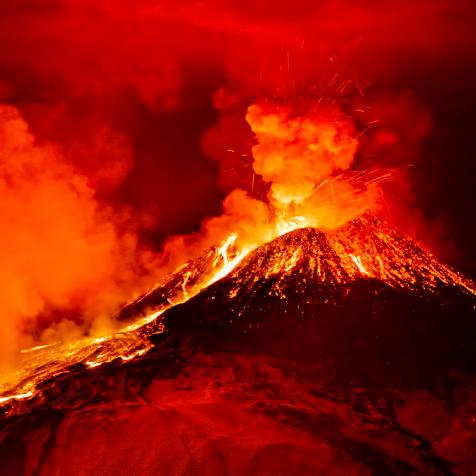
Warren Faidley
Hurricane Prediction: The Forecasting Science that Saves Lives
Hurricane season is a fearful and anxious time of year for many people. Tropical cyclones and storms occur in a geographical belt affecting mostly US coastal states, but the physical and financial destruction they cause mean that science must improve constantly to minimize their effects on society.
The facts about these extreme weather events show how important meteorology and weather forecasting are in tracking their progress. Hurricanes are growing larger, more destructive and are happening more regularly over time. Long term data shows higher sustained wind speeds and greater range, both north and south.
Super Storm Supercomputers

Callista Images
Researchers at the University of Miami want to find out more about why wind speeds and gusts vary across different landscapes. Houses, trees, and densely packed skycrapers all have an impact on wind speed and direction. Simulations of Hurricane Wilma run on a Pegasus supercomputer have allowed scientists to model the storm making landfall 24 times over South Florida.
Their long-range study promises to upgrade forecast models and predict how buildings affect wind positively, by blocking it, or negatively by channeling it into stronger gusts. Data gathered from the simulations could lead to extreme weather apps that predict the force of wind in a particular neighborhood throughout the course of a storm.
From the Sky
Critical real-time data can also be gathered from 'storm chaser' aircraft parachuting dropsondes – GPS-enabled data probes that collect wind, temperature, and humidity data – into the hurricane.
Seafaring robotic craft released by the Atlantic Oceanographic and Meterological Laboratory in coastal waters, contain an array of sensors to add to that data and show how warming waters can affect storm potency.
Slocum ocean gliders, as they are known, are robust and some have operated through two or three hurricanes already. When emergency managers in coastal cities get advanced warning from glider data about storm severity and direction they can then plan evacuations, save lives, and limit damage.
Natural Protection

Franz Marc Frei
Perhaps just as important as nature's data points are its resilient vegetation systems. The National Wildlife Federation published a report based on decades of research, showing that ecosystems such as coastal mangroves and forests, as well as engineered dunes can limit tidal surge damage.
Investing more in restoring nature and protecting what we have is equally or more effective than building seawalls, dams, and levees, it said.
The Cost of a Storm

Newsday LLC
As costs from large storms increase, forecasters predict that the Atlantic hurricane season, which extends from June 1 to November 30, will be worse than normal. Fueled by warm ocean temperatures, rising heat in the climate also means record-breaking rainfall that causes localised flooding.
The National Oceanographic and Atmospheric Administration is giving the University of Miami $310 million for climate research, including the impact of increasing ocean heat waves.
At the International Hurricane Research Center (IHRC) the 'wall of wind' turbine system generates Category 5-speed winds to help test, develop and improve hurricane-resistant structures. Their efforts will help architects build storm-proof buildings that last.
From high above the Earth NASA's Terra satellite uses infrared light to analyze the strength of storms by measuring temperature above the clouds. The shape of a tropical cyclone reveals how its winds and clouds are structured, how strong it is and how it can break down, giving forecasters more predictive power.
To help people stay informed and find out more about the science of hurricanes, the IHRC and Museum of Discovery and Science have created the 'Eye of the Storm' web series. Episodes uncover the secrets of forecasting, tracking, and disaster management, with lots of inside science, technology, and practical advice.


















